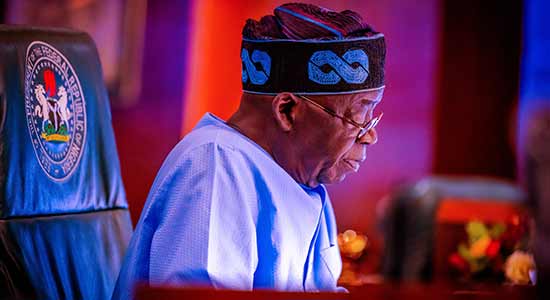The challenges of managing Nigeria’s fuel subsidy conundrum
Nigerians have been going through a horrendous experience for the purchase of premium motor spirit (PMS) or petrol since July 2024. Millions of man-hours have been lost to long fuel queues in service stations all over the country. For an informed or diligent economist or public finance specialist, this is not a surprise. Our fuel supply business model is faulty and unsustainable. It has been based on a hundred percent importation of petroleum products for the past 28 years, with a long history of fuel subsidy, absorbed by the government. In the last 8 years, the national oil company, the Nigerian National Petroleum Company (NNPC), has been the sole importer of petrol, because of the subsidy element. With the drastic reduction in Nigeria’s crude oil production and exports in the last ten years from over 2 million barrels per day (mbpd) to slightly over 1 mbpd, the government’s ability to continue to bear huge fuel subsidy costs of trillions of naira per year has been drastically constrained.
“It is entirely due to the effect of exchange rate pass-through on the naira value of imported petrol due to the massive depreciation of the naira.”
President Bola Tinubu’s courageous move to remove fuel subsidies on May 29, 2024, would have largely been effective, ceteris paribus (the popular Latin phrase meaning all other things held constant or remained unchanged). That unfortunately was not the case. The Nigerian foreign exchange market was simultaneously floated, and the naira between the end of May 2023 and the beginning of September 2024 has depreciated by about 245 percent at the official market, where NNPC sources dollars to import fuel. This has been primarily responsible for the return of fuel subsidies. This is because the naira value for importing a litre of petrol has increased by well over 200 percent since the removal of fuel subsidies on May 29, 2023, with prices of crude oil remaining relatively stable in the last 15 to 16 months at roughly $70/barrel due to efforts by Opec+ to cut back on fuel production and prop up prices.
Read also: Fuel subsidy was noose around Nigeria’s neck, removal is for growth – Tinubu
The Federal Government and NNPC have been struggling to deny that we are still operating a fuel subsidy regime, which is entirely unnecessary, a public relations fiasco, and an absence of strategic communication. It is not for lack of trying or insincerity of purpose that the Nigerian government is still grappling with the hydra-headed problem of fuel subsidy. It is entirely due to the effect of exchange rate pass-through on the naira value of imported petrol due to the massive depreciation of the naira.
The current landing cost of a litre of petrol is about N1200, and before the September 3 hike in the pump price of petrol to between N855 and N897 per litre by NNPC, the price per litre was average about N600 per litre (in Lagos). That in effect meant fuel was being subsidised to the tune of about 50 percent, which was certainly unsustainable. What the Federal Government and the NNPC should have done is put all the relevant information on the table, tell the public the financial implications for the finances of both the NNPC and the government, and prepare the minds of Nigerians for an inevitable increase in the pump price of gasoline.
Read also: FG begins probe on N2.7trn fuel subsidy debt claims by NNPC
With the Federal Government spending 65 percent of its current revenue in 2023 on debt service and with a bulging budget deficit in 2024, the government is not in the position to continue sustaining a fuel subsidy regime. The consequence will be the government’s inability to provide critically needed infrastructure and social services.
Because of the opacity of the operations of NNPC Limited, one would be tempted to take its claim of owing fuel traders $6.8 as justification for the fuel price increase with a pinch of salt, but no one can doubt that the national oil company is financially constrained and overburdened. Thus, one can perceive the coincidence of the fuel price hike with the beginning of the local refining of petrol by Dangote Refinery as either orchestrated or entirely fortuitous. Either way, it is clear there is no way a private refinery can sell its PMS at a subsidised price and remain commercially viable.
As I write, petrol queues are gradually easing in Lagos service stations. Prices I surveyed in 7 service stations on Lagos mainland over the weekend were N855/litre in 3 NNPC retail outlets, N868/litre in 3 other major oil marketers’ service stations, and N880/litre in a service station of an independent marketer. The reality is that there is still a subsidy of over N300/litre if the landing cost is about N1200/litre. Is it possible that with local refining, the maths works out to roughly the same as the recently increased pump prices? Specifically, will Dangote Refinery and other local refineries be able to profitably roll out PMS at the new prices of petrol in Nigeria?
On the whole, one can only appeal to Nigerians to exercise a little patience. The increased hardship of the new pump prices of fuel is real and difficult to bear, no doubt, and most of us are feeling the pinch. The fuel subsidy regime cannot continue. Truly, the government is broken for the reasons adduced above. However, there is light at the end of the tunnel. The expected 40 percent savings in foreign exchange as a result of local refining of PMS will lead to an appreciation in the naira exchange rate, which has the potential of reducing the naira cost of local fuel refining. However, the long-term benefit of local refining of fuel is not cheap gasoline or the maintenance of fuel subsidies, but fuel security.
Mr Igbinoba, an economist and business consultant lives in Lagos.







